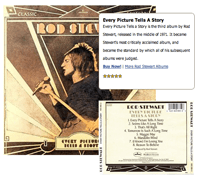dwClickable: Entire Block Clickable Using MooTools 1.2
I recently received an email from a reader who was really impressed with Block Clickable, a jQuery script that took the link within a list item and made the entire list item clickable. I thought it was a neat script so I took a few minutes and ported it to MooTools.
The XHTML
<ul class="block-list"> <li>Clicking this block will take you to <a href="https://davidwalsh.name">DavidWalsh.name</a></li> <li>Clicking this block will take you to <a href="http://scriptandstyle.com">Script&Style.com</a>.</li> <li>Clicking this block will take you to <a href="http://bandwebsitetemplate.com">BandWebsiteTemplate.com</a></li> <li>Clicking this block will take you to <a href="http://mootools.net">MooTools.net</a></li> </ul>
You see an unordered list with list items containing a link.
The CSS
.block-list { padding:0; margin:0; list-style-type:none; width:500px; }
.block-list li { padding:20px; background:#bfd0ed; border-top:3px solid #033289; }
.block-list li:hover { background:#e3ecfa; cursor:pointer; }
Here you can define styles for the list item. The :hover state is important -- you need to treat the list item as though it's a link when the mouse hovers over the link.
The MooTools 1.2 JavaScript Class
var dwClickables = new Class({
//implements
Implements: [Options],
//options
options: {
elements: $$('li'),
selectClass: '',
anchorToSpan: false
},
//initialization
initialize: function(options) {
//set options
this.setOptions(options);
//set clickable
this.doClickables();
},
//a method that does whatever you want
doClickables: function() {
//for all of the elements
this.options.elements.each(function(el) {
//get the href
var anchor = el.getElements('a' + (this.options.selectClass ? '.' + this.options.selectClass : ''))[0];
//if we found one
if($defined(anchor)) {
//add a click event to the item so it goes there when clicked.
this.setClick(el,anchor.get('href'));
//modify anchor to span if necesssary
if(this.options.anchorToSpan) {
var span = new Element('span',{
text: anchor.get('text')
}).replaces(anchor);
}
}
},this);
},
//ads the click event
setClick: function(element,href) {
element.addEvent('click', function() {
window.location = href;
});
}
});
The class accepts three options:
- elements: A list of elements to make clickable
- selectClass: If you have more than one link in the item, you can designate which link to choose my the selectClass
- anchorToSpan: Since the link borrows the anchor's href attribute, you don't necessarily need the link. This settings directs the class to change the anchor to a SPAN tag if anchorToSpan is set to true.
The MooTools 1.2 Usage
window.addEvent('domready', function() {
var clix = new dwClickables({
elements: $$('.block-list li'),
anchorToSpan: true
});
});
Just as you would with any other MooTools class, you instantiate the class and pass in the desired options.
I really enjoyed creating this class. It plays nice with search engines and implements the list item / click functionality flawlessly.
Any suggestions?





I’m no CSS expert but I’ve always been able to accomplish things like this just by setting the width and height of the containing element and “display:block” as the anchors style.
@Matt: I believe this would be considered the “semantic” approach. Your method works too.
@David: Ok, I wanted to make sure I wasn’t missing something.
Yes, I use this all the time with just CSS using display: block on the anchor. However, the CSS approach will not work if you have text within the list item that is outside of the anchor tag (like this example shows). If it is all within the anchor tag, go the CSS-only route.
…and byt the way Matt, there is no need to set the width and height. :)
@Jeff, you make a valid point about having text outside the anchor tag. My first thought was to just jam all the text into that anchor and be done with it. But that’s bad SEO practice. If I were to jam all the text into that anchor, Google would look at all that text instead of what’s most important.
Thanks.
Hey David, any consideration on getting a JQuery version of this?
@Rich: The link at the top of the page is a jQuery version made by someone else.
@David To this day I have still not been able to figure out which to invest my time on MooTools or jQuery. Which would you recommend? Why?
@Adam: I’m a Moo guy. I love its syntax, plugins, documentation, and community.
The only way to find out is to give them both a run.
David,
Thanks for all your hard work. My users were having a little trouble finding the actual spot to click in our list of apps. I implemented this in about 20 minutes. It’s working perfectly.
You are the Main Moo.
Justin
Is this working only with list elements or it is possible to make a div clickable if it contains different things like p, img, h1, etc.?
@Birke: You can use my updated plugin here:
http://davidwalsh.name/js/clickables
Hey thats nice! :)
Thank you for the update of your plugin.
Best wishes, Birke
May I ask you how your updated plugin works? I have a div which contains different elements like h1, img, p and my a for the link of the whole div. If I use the statement “elements: ‘.DIVNAME a ‘,” to adress the link in the div it is not working.
I tried “elements: ‘.DIVNAME ‘,” too, but no success.
Best wishes, Birke